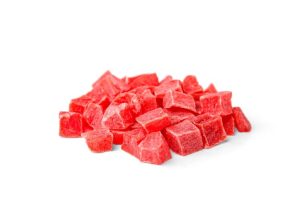Assessing the bioavailability of HHC hexahydrocannabinol cannabinoid formulations is a critical endeavor in the realm of cannabis research and pharmaceutical development. Bioavailability refers to the proportion of a substance that enters the bloodstream when introduced into the body and is thus available to produce its desired effect. In the case of cannabinoid formulations, understanding their bioavailability is paramount for optimizing dosing regimens, predicting therapeutic outcomes, and ensuring patient safety and efficacy. One of the primary challenges in assessing the bioavailability of HHC cannabinoid formulations stems from the complex interplay between the chemical properties of the compound and the physiological processes of the human body. HHC, a structural analog of THC tetrahydrocannabinol, exhibits its own unique pharmacokinetic profile, influenced by factors such as solubility, metabolism, and route of administration. Therefore, comprehensive studies are required to elucidate how these factors affect the absorption, distribution, metabolism, and excretion of HHC within the body. The route of administration plays a pivotal role in determining the bioavailability of HHC formulations.

Inhalation, oral ingestion, sublingual absorption, and topical application are among the various routes through which cannabinoids can be delivered to the body. Each route presents distinct advantages and challenges in terms of absorption efficiency, onset of action, duration of effects, and systemic exposure. For instance, inhalation typically yields rapid onset of effects due to direct absorption into the bloodstream via the lungs, whereas oral ingestion results in slower onset but prolonged duration of action owing to hepatic metabolism and first-pass effects. In addition to route of administration, formulation characteristics such as particle size, carrier matrix, and excipients can significantly influence the bioavailability of HHC exhalewellness. Nanotechnology-based delivery systems, lipid-based formulations, and novel encapsulation techniques are being explored to enhance the solubility and stability of HHC, thereby improving its absorption and bioavailability. By encapsulating HHC within lipid nanoparticles or micelles, researchers aim to increase its aqueous solubility and protect it from enzymatic degradation, ultimately promoting more efficient absorption and systemic circulation.
Metabolism also plays a crucial role in shaping the bioavailability of HHC cannabinoid formulations. Like THC, HHC undergoes extensive hepatic metabolism, primarily mediated by cytochrome P450 enzymes, before being eliminated from the body. Metabolism can lead to the formation of active metabolites with distinct pharmacological properties, further complicating the assessment of bioavailability. Moreover, individual variations in metabolic enzyme activity and genetic polymorphisms can influence the rate and extent of HHC metabolism, contributing to variability in therapeutic responses among patients. Furthermore, the bioavailability of HHC formulations may be influenced by factors such as food intake, gastrointestinal motility, and disease states that affect gastrointestinal absorption and hepatic function. Therefore, comprehensive pharmacokinetic studies incorporating different dosing regimens, routes of administration, and patient populations are essential for characterizing the bioavailability of HHC cannabinoid formulations under various clinical scenarios. In conclusion, assessing the bioavailability of HHC cannabinoid formulations requires a multifaceted approach that considers the interplay of chemical, physiological, and pharmacokinetic factors.
